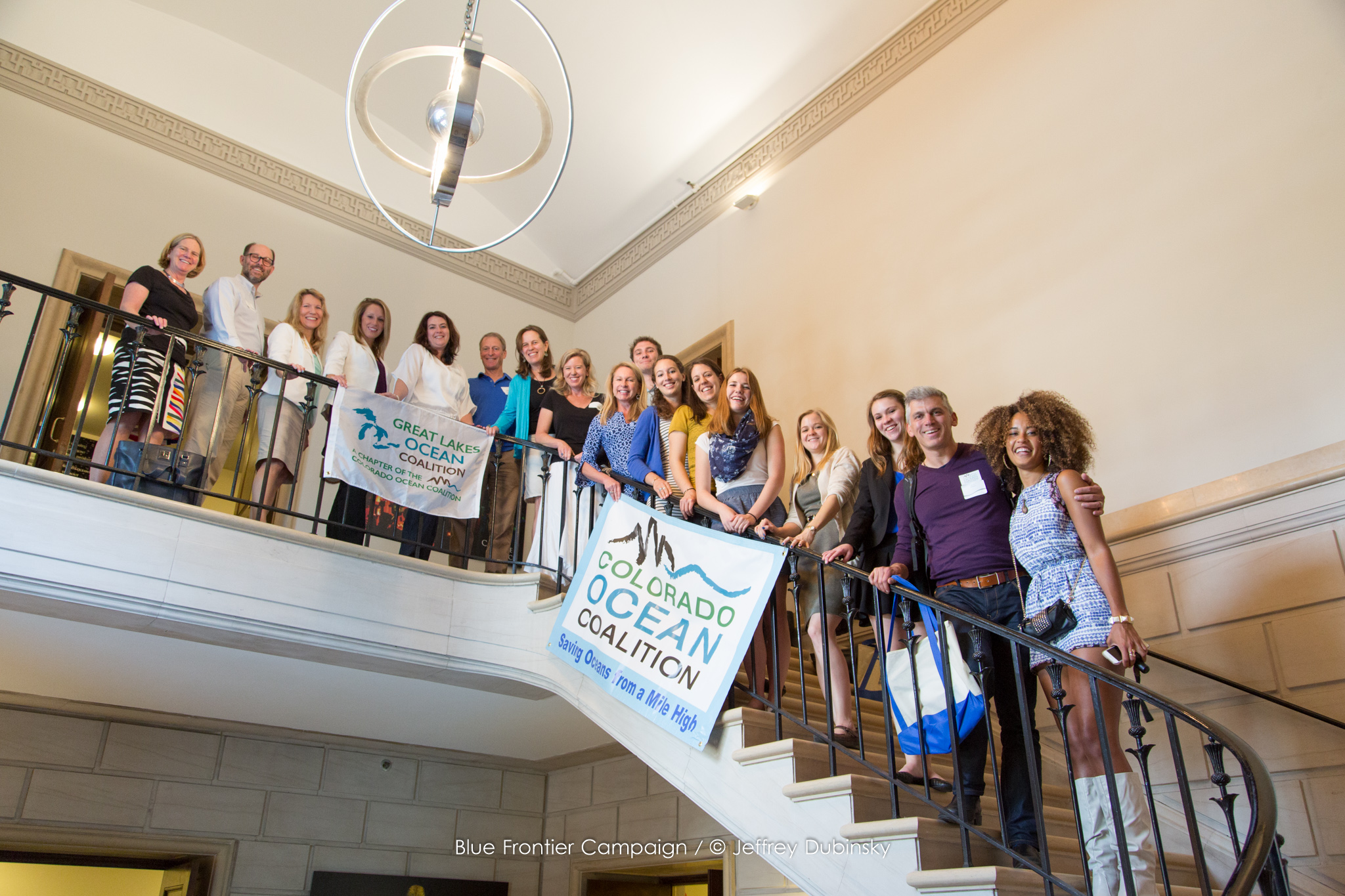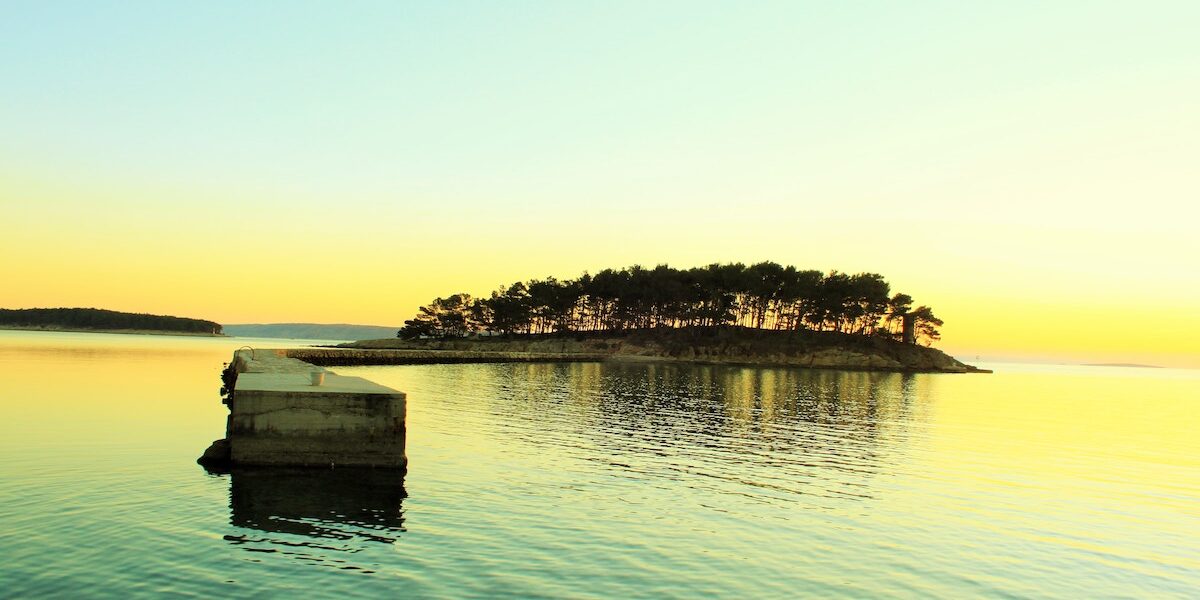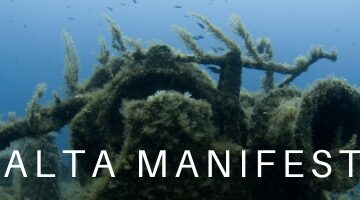By Ben Scheelk, Program Associate
There is an old bit of weather lore that states:
Red sky at night, sailor’s delight.
Red sky in the morning, sailor’s warning.
Fortunately, for the over 290 people that attended this year’s Blue Vision Summit, the District of Columbia, in very atypical fashion for this time of year, delighted us all with a series of crimson-sky evenings spent celebrating among friends and colleagues, as well as beautiful bluebird days for the many receptions, presentations and meetings that took place through the Summit. The Summit, a biannual event organized by the Blue Frontier Campaign, brings together ocean conservation leaders from around the world.
Yet, despite the serene weather, a sense of urgency and deep resolve in anticipation of a fast-approaching storm permeated the Summit. And no, it was a not our red mind that was giving us all anxiety, as The Ocean Foundation’s long-time project manager and founder of LiVBLUE, Wallace J. Nichols, describes in his bestselling book Blue Mind, but rather a different sort of undercurrent. One whose shape—and pungent naphthalene smell—is all too familiar among ocean lovers. It was the looming threat of expanded offshore drilling that was staining our morning skies red, a fear made tangible on the eve of this year’s Blue Vision Summit with the Obama Administration’s announcement that energy giant Shell has been granted permission to proceed with drilling this season in Alaska’s tempestuous Chukchi Sea.
Although this issue certainly occupied the thoughts of many in attendance—a setback only aggravated by the announcement later in the same week that drilling is to resume in the Gulf of Mexico’s ill-fated Macondo field a mere 3 miles from the epicenter of the 2010 BP PLC well blowout, the largest oil spill in U.S. history—it did not dampen our spirits. In fact, it did just the opposite. It made us stronger. More connected. And hungry for our next challenge.

What immediately strikes you about the Blue Vision Summit is not the who’s who list of speakers, or the diverse and well-crafted agenda, but the sense of engagement and optimism that infuses the Summit. It’s the way that people from all walks of life, both young and old, come together to have a constructive discussion about the threats that our ocean and coasts face, and to develop bold plans for addressing those threats. The crux of which is the Healthy Ocean Hill Day, an opportunity for all participants to head up to Capitol Hill for the day to speak with members of Congress to impress upon them the importance of marine issues, and to champion legislation designed to advance the health of the ocean and the billions that rely directly upon it for their livelihood and sustenance.
This year I had the privilege of joining in this effort with a group of people that you might not think to associate with ocean conservation: inland communities. Led by Vicki Nichols Goldstein, The Ocean Foundation project manager for the Colorado Ocean Coalition, the inland ocean delegation consisted of people from throughout the Midwest and Western states who care deeply about our oceans and are of the conviction that these issues address everyone, including landlocked states like Colorado, which boasts the highest per-capita number of certified divers in all the U.S.
My particular subset of the inland ocean delegation, the Michigan delegation, had the fortunate opportunity to visit with Rep. Dan Benishek (MI-1). The 1st District of Michigan is where I grew up and attended college, hence this meeting was of particular interest for me as a Michigander and oceanophile.
While I have deep respect and admiration for Dr. Benishek, specifically his position as co-chair of the National Marine Sanctuary Caucus, and his role as co-chair and founder of the House Invasive Species Caucus, there is one issue that we are in major disagreement, and that is offshore drilling.
We came prepared to our meeting with statistics on the tremendous financial value of the East Coast’s expansive coastal economy whose tourism, recreational activities, and fisheries are mutually exclusive to the presence of black-sheened birds, oiled marine mammals, and tar ball-covered beaches. In response to our arguments, Dr. Benishek contended that the decision to allow for offshore drilling is a states’ rights issue, and the federal government should not be able to dictate whether the people of the East Coast can extract this valuable resource from deep beneath the waves.
But, when an accident happens, which is statistically and categorically inevitable, and oil starts gushing into the water column and is quickly swept away along the entire Atlantic coast by the Gulf Stream, and eventually out to sea along the North Atlantic current, is it still a “state issue”? When a small family business that has existed for generations must close its doors because nobody comes to the beach anymore, is it a “state issue”? No, it’s a national issue, which requires national leadership. And for the sake of our communities, of our states, of our country, and of our world, it would be best to simply leave that fossil fuel beneath the surface, because water and oil don’t mix.
This year’s Healthy Ocean Hill Day included a whopping 134 participants from 24 state delegations and 163 visits with Congressional leaders and staff—the largest single-day ocean and coastal protection lobbying effort in our nation’s history. Call us ocean lovers, call us seaweed rebels, but whatever you do, do not call us quitters. Although the red evening skies of the Blue Vision Summit gave us pause to reflect upon our victories, we’re ready for the red sky dawn. This is our sailor’s warning, and rest assured, as we venture out into the churning seas of this heated policy debate regarding the future of our nation’s offshore oil reserves, all hands are on deck.
Image 1 – The Inland Ocean Delegation. (c) Jeffrey Dubinsky
Image 2 – Poseidon looks over the U.S. Capitol Building during the largest ocean conservation citizen lobbying effort in U.S. history. (c) Ben Scheelk.







